
Topics
Guests
- Elizabeth Williamsonfeatures writer at The New York Times and former member of the paper’s editorial board.
Two years of right-wing conspiracy theorist Alex Jones’s text messages have now been turned over to the House select committee investigating the January 6 insurrection. The messages were first revealed in court last week in Austin, Texas, just before a jury ordered InfoWars host Alex Jones to pay $4.1 million in compensatory damages and $45.2 million in punitive damages to the parents of Jesse Lewis, a 6-year-old boy killed in the 2012 Sandy Hook Elementary School massacre in Newtown, Connecticut. For years Alex Jones spread conspiracy theories that the Newtown shooting was a government hoax and the victims’ families were paid actors, resulting in online harassment and death threats for Sandy Hook families. “He will never change, but it does send a message … that this is just so important to push back against the lies and disinformation,” says New York Times reporter Elizabeth Williamson, who covered the case and is the author of “Sandy Hook: An American Tragedy and the Battle for Truth.”
Transcript
AMY GOODMAN: Two years of right-wing conspiracy theorist Alex Jones’s text messages have now been turned over to the House select committee investigating the January 6th insurrection. The messages were first revealed in court last week in Austin, Texas, just before a jury ordered InfoWars host Alex Jones to pay $4.1 million in compensatory damages and $45.2 million in punitive damages to the parents of Jesse Lewis, a 6-year-old boy killed in the 2012 Sandy Hook Elementary School massacre in Newtown, Connecticut.
For years Alex Jones spread conspiracy theories that the Newtown shooting was a government hoax, the victims’ families paid actors, resulting in online harassment and death threats for Sandy Hook families. During the trial, Alex Jones admitted on the stand that the Sandy Hook massacre was real, but he continued to spread lies on his InfoWars show. This is 6-year-old victim Jesse Lewis’s mother, Scarlett Lewis, confronting Alex Jones as she testified.
SCARLETT LEWIS: My son existed. You’re still on your show today trying to say that I’m — implying that I’m an actress, that I am deep state. … Truth — truth is so vital to our world. Truth is what we base our reality on. And we have to agree on that to have a civil society. Sandy Hook is a hard truth. Hard truth. Nobody would want to ever believe that 26 kids could be murdered.
AMY GOODMAN: For more, we’re joined by New York Times reporter Elizabeth Williamson, who covered the this latest Alex Jones trial, as well as many others, and is the author of the new book, Sandy Hook: An American Tragedy and the Battle for Truth.
Welcome to Democracy Now!, Elizabeth. You were in the Austin, Texas, courtroom, what, like 10 feet from Alex Jones during jury instruction. As you wrote the book, you spent a good deal of time with the family members of those little children and other staff at Sandy Hook who were murdered. Talk about what you thought was most significant about this trial, and that particular moment, when you have the mother confronting Alex Jones, saying, “I am not a crisis actress.”
ELIZABETH WILLIAMSON: Thanks, Amy.
That was a remarkable, extraordinary moment that you played. And I’m glad you played that specific one, because for 90 minutes Scarlett Lewis addressed every response while she was on the witness stand directly to Alex Jones. It was so powerful. But that moment that you played was particularly so, because within that was really the reason why the families have brought this suit, that they feel like Sandy Hook — and I agree, and that’s what I wrote in my book — that this was a foundational moment in this decade-long descent into disinformation and false narratives that our society is undergoing. And the families are raising a red flag, that, you know, this is not only impacting us, this is eroding the foundation of our democracy. And that’s what Scarlett was saying in that clip.
JUAN GONZÁLEZ: But, Elizabeth, even as the trial was going on, Alex Jones was still on his show blasting the attempts to — basically, as a witch hunt against him.
ELIZABETH WILLIAMSON: Yeah.
JUAN GONZÁLEZ: What’s the likelihood of him actually having to pay any of this huge damages, given the fact that Texas has a cap on punitive damages?
ELIZABETH WILLIAMSON: No, absolutely. He will probably, eventually — but it could be years — have to pay about $5 million, rather than $49 [million], and that’s because state law in Texas caps punitive damages in most instances at $750,000 per plaintiff. So, that means that Neil Heslin, Jesse’s father, and Scarlett Lewis each would each receive $750,000.
But, let’s not forget, there are two more trials for damages coming up: another one in Texas — and if past is predictor, we could maybe expect a similar result — but there is another one coming in Connecticut, where there aren’t those types of caps on damages. And that case has been brought by the families of eight victims. So, that is really one to watch for.
Will this bankrupt Alex Jones? He already claims he’s bankrupt. That’s a subject of intense dispute by the families and their lawyers. Who knows? And will he ever change? Probably not. You know, I would say 90%, 99%, that he will never change. But it does send a message to would-be Alex Joneses, and it also just sends that societal message that this is just so important to push back against the lies and disinformation that are flowing online that more and more Americans are grabbing onto and believing.
JUAN GONZÁLEZ: And what can you tell us about what we learned in the trial about the impact on these families, on Scarlett Lewis and Neil Heslin, the parents of Jesse Lewis, and others, as well?
ELIZABETH WILLIAMSON: Sure. So, within hours after the shooting, Alex Jones started to spread the lie that this was a false flag operation, meaning a pretext, but planned by the government, to confiscate Americans’ firearms. He likes to say that he was only echoing the claims of others or that he was only asking the questions that other people were asking. That’s not true. He really did begin to talk about this within hours. And he has a following of tens of millions of people. So that circulated. And, you know, it only takes a small percentage who are willing to confront the families.
So, what started to happen was initially this was online. People started seeking out the family members, who Jones was implying — and many others, as well — were complicit in this government plot. So, they were calling them frauds. They were saying they did it for money. They were coming onto memorial pages that had been set up on Facebook and elsewhere on social media in recognition and in honor of the victims. And then they kind of crossed that virtual divide, and they began confronting them on the street, looking in their windows, digging through their trash, following them around at funerals and at memorial services and commemorative events. And they’ve made their lives a living hell. They’ve threatened their lives.
One family — the next Texas case will be Lenny Pozner and Veronique De La Rosa, whose son Noah Pozner is the youngest Sandy Hook victim. They have moved almost a dozen times, because their personal information, including their home addresses, have been published online by these conspiracy theorists. So, it is really a substantial and serious and horrific secondary trauma that’s been inflicted on these families.
AMY GOODMAN: So, the claims on InfoWars, that these children never died or never existed to begin with?
ELIZABETH WILLIAMSON: Yes.
AMY GOODMAN: And if you can talk about what he said about that in court, and then the money he made off of the lies? The texts, that it’s hard to believe, but his lawyer mistakenly handed over to the prosecutors, that now ended up at the January 6th committee —
ELIZABETH WILLIAMSON: Yeah.
AMY GOODMAN: — talking about him making, what, $800,000 in a day?
ELIZABETH WILLIAMSON: Yeah. Yeah. No, he has made — and, you know, one of the reasons, Amy, that he never stopped talking about this for years — only after the lawsuits were threatened and filed did he stop talking about Sandy Hook — and it was because it was a money spinner for him. His audience more than doubled from the time after the shooting until 2016. That was the period of time in which he was talking about this the most.
He has revenues in excess of $50 million a year. His business model is ingenious, in that he sells products that are targeted to the paranoias of his sort of conspiracy-minded audience. So, it’s diet supplements for people who are distrustful of traditional medicine, unregistered gun components for people who don’t want to register a firearm with the federal government, doomsday prepper gear for people who are preparing for the end of times or full government takeover. So, he was making a lot of money.
And this was a claim that people really latched onto. There were a significant number — well, one thing aired in court was, a year after Sandy Hook, there was a study done —
AMY GOODMAN: We have 10 seconds.
ELIZABETH WILLIAMSON: — by Fairleigh Dickinson — sure — that said a quarter of Americans at that time believed that Sandy Hook was likely or definitely fake.
AMY GOODMAN: Well, we are going to do Part 2 and post it online at democracynow.org and talk about the texts that were handed over and what they may say. We’re speaking with Elizabeth Williamson, New York Times features writer, author of the book Sandy Hook: An American Tragedy and the Battle for Truth.
That does it for our show. Democracy Now! currently accepting applications for a people and culture manager. Learn more at democracynow.org. I’m Amy Goodman, with Juan González.

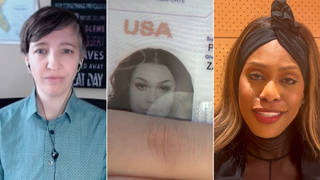
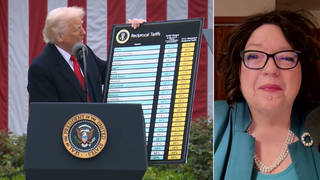
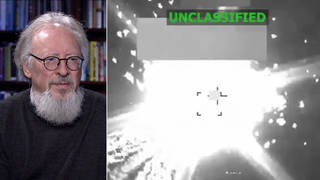
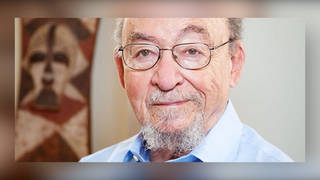





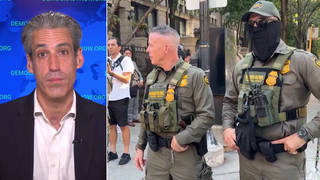
Media Options